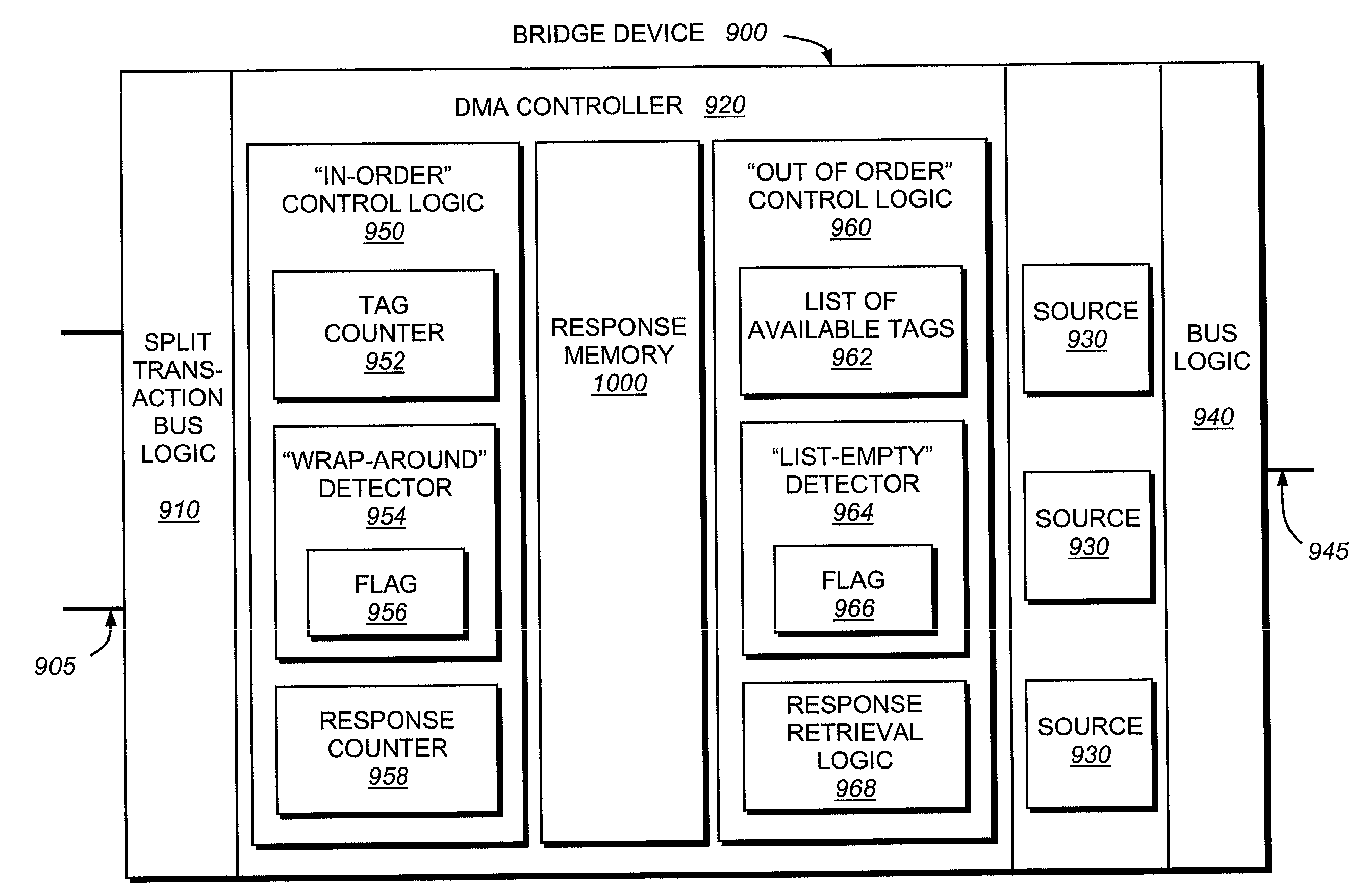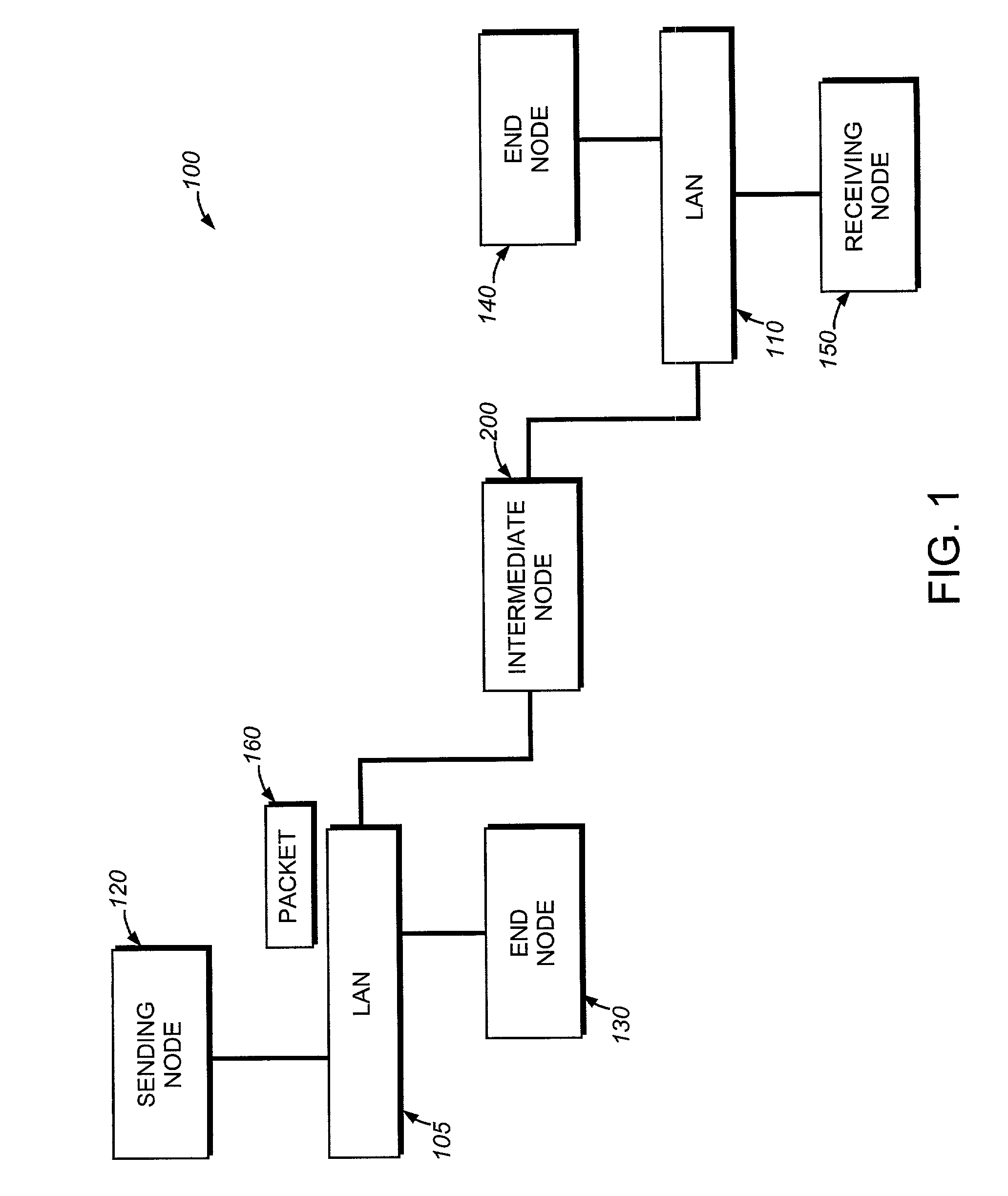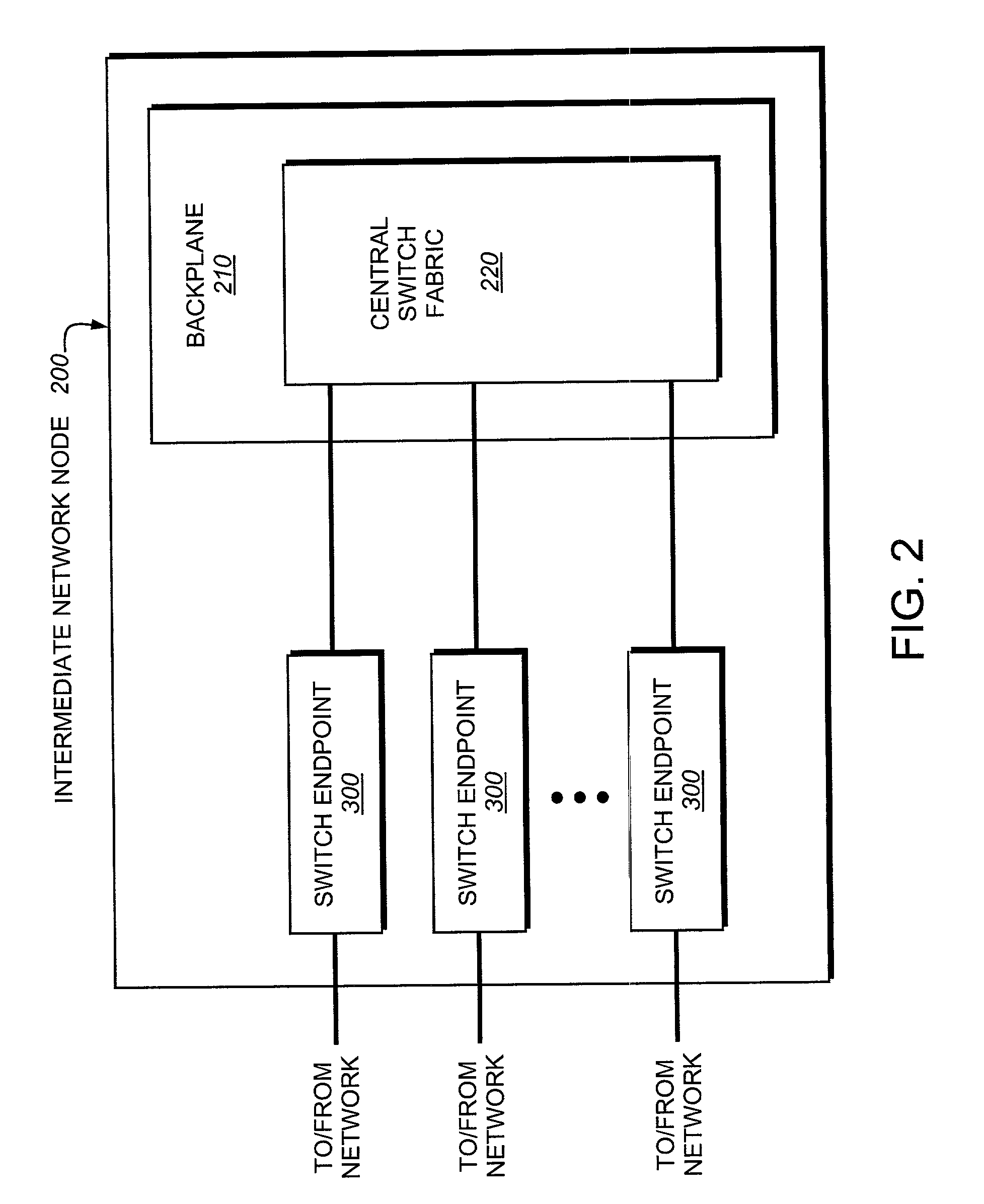Split transaction reordering circuit
a transaction bus and circuit technology, applied in the direction of electric digital data processing, instruments, etc., can solve the problems of plurality of transferred requests, atomic bus may potentially waste bus cycles, bus to stall waiting for resources to no longer be used,
- Summary
- Abstract
- Description
- Claims
- Application Information
AI Technical Summary
Benefits of technology
Problems solved by technology
Method used
Image
Examples
Embodiment Construction
A. Intermediate Nodes in a Network
[0031]FIG. 1 is a block diagram of a computer network 100 comprising a collection of interconnected subnetworks and nodes. The nodes may comprise computers including end nodes 130 and 140, such as a sending end node 120 and a receiving end node 150, and an intermediate network node 200, the latter of which may be a switch or router. The subnetworks 105, 110 included within network 100 are preferably local area networks (LANs) interconnected by the intermediate node 200, although the networks may comprise other communication links, such as wide area networks. Communication among the nodes coupled to the LANs is typically effected by exchanging discrete packets 160 among the nodes.
[0032]For example, the sending node 120 generates a data packet 160 by encapsulating “payload” data within headers, such as conventional data link and network layer headers, as the data passes through different layers of a protocol stack. The packet is then transmitted over ...
PUM
 Login to View More
Login to View More Abstract
Description
Claims
Application Information
 Login to View More
Login to View More - R&D
- Intellectual Property
- Life Sciences
- Materials
- Tech Scout
- Unparalleled Data Quality
- Higher Quality Content
- 60% Fewer Hallucinations
Browse by: Latest US Patents, China's latest patents, Technical Efficacy Thesaurus, Application Domain, Technology Topic, Popular Technical Reports.
© 2025 PatSnap. All rights reserved.Legal|Privacy policy|Modern Slavery Act Transparency Statement|Sitemap|About US| Contact US: help@patsnap.com



